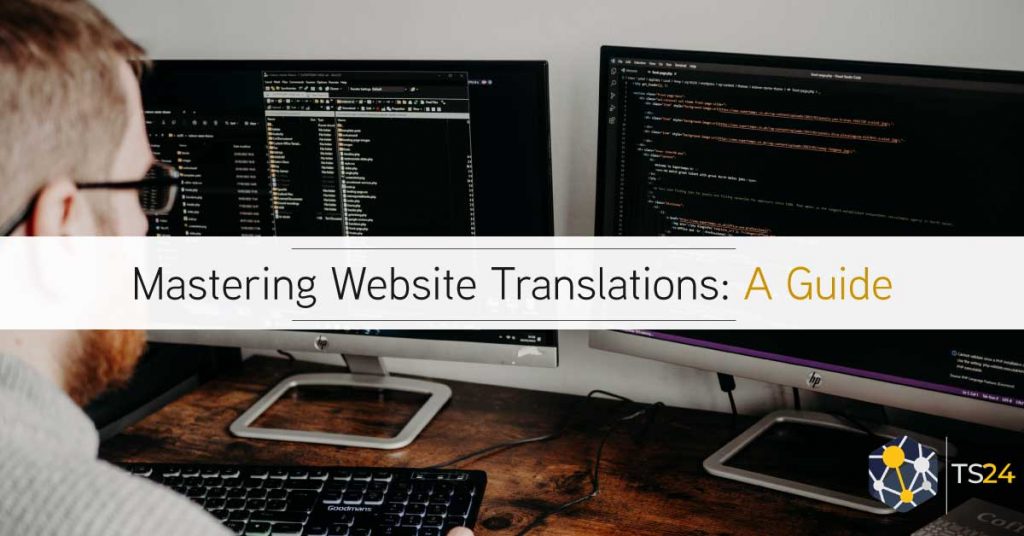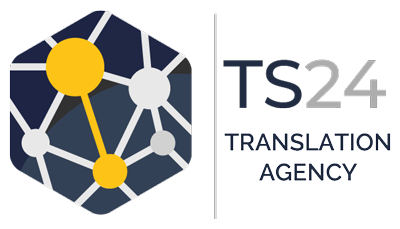A Step-by-Step Guide to Mastering Website Translation
Translating the content of a website into another language isn’t a straightforward process. It involves not only the linguistic aspects of a professional translation, but also the socio-cultural factors of the intended audience, which might directly affect how the translated content is perceived within the target market. In order for your website to be translated reliably, a localisation service should also be carefully applied. Generally, working with an expert translation agency guarantees the highest accuracy and reliability of certified translation & localisation services.
In simple terms, localisation means translating a website into another language in a way that also adopts the cultural nuances and preferences of the target audience. It’s more than just language conversion; it’s about cultural adaptation.
As a company with plans for expansion into a new country, your localisation efforts have to be top-notch. Localising your website into a new language requires the expertise of website localisation services and your website development team. In this guide, we’ll explore the steps to master website localisation.
EXPERT’S TIP: Want to boost your company’s profile globally? See how translations can help your marketing strategy.
Components of Website Translation & Localisation
Many businesses think they can simply translate their website from English into their target language and call it a day. If that was it, professional website translation services could suffice.
But website localisation is much more than that. It involves several components, such as:
-
- Video and graphics localisation
- Cultural adaptation of visuals and text
- Internationalisation
- User interface localisation
- Content adaptation
Now that you understand the full scope of website localisation let’s dive into how to master it.
EXPERT’S TIP: Want to learn how translating and localising your website can help your sales during the Christmas Season? Read our latest article!
A Step-by-Step Guide to Website Localisation
We’ll discuss both e-commerce and non-e-commerce websites or parts of websites in our guide. You can apply these tips to your website, depending on whatever category it falls into.
- Identify Your Target Audience
- Translate Your Website
- Localise Visuals
- Adjust the Layout
- Test Your Website
Step 1: Identify Your Target Market
In simple words, who are you localising your website for? Let’s say your current website is in English. You want to expand to Africa.
For that, you want to localise your website into Afrikaans, Somali, Fulani, Arabic, Swahili, and other relevant languages. Start by making a list of languages that fit your target market.
Let’s clear one thing from the first step. You’re not just translating for a specific language but also a distinct culture. Do not assume that the culture in all African or Asian countries is the same; many are poles apart. So, stick your localisation efforts to the specific country rather than the whole continent or region.
Step 2: Translate the Website
The next step is to translate your website according to the languages you listed. Here’s what you need to translate:
Product Pages
If you have an e-commerce website, translate the product pages into your target languages. Make sure you use the appropriate language for measurements, currency, and other details.
Since you’re localising the content, use the units of measurement and currency your target audience uses.
Checkout Pages
Localising the checkout page will urge more users to complete their purchases. There’s no room for language barriers here.
Again, you’re localising, not translating only. So, offer the payment methods your target market prefers. For example, African countries often use mobile money, which is uncommon in many other parts of the world. Similarly, most of the Western world uses PayPal, but the service is unavailable in many Asian countries.
Secondly, localise the form fields, too. These are the sections where you collect your users’ data. Use the format that is familiar to your target audience.
For example, the telephone number field on US websites looks like this: xxx-xxx-xxxx. On the other hand, this is how they are in the UK: xxx-xxxx-xxxx.
The same is true for address fields, too. In some countries, streets don’t have names. For example, in Japan, addresses are based on blocks and districts. Label the fields in your forms based on the local context.
SEO Content
Your website likely has a ton of SEO content. It could be blog posts or category pages. Translate this content, too.
However, merely translating the content won’t do the job. You’ll have to get an SEO specialist on board. The keywords you use in Spain for a blog post might not be the same as the ones that rank high in Japan or Iran. An SEO specialist will help you identify the highest-ranking keywords in your target market’s language and region.
They will also help you optimise the content to rank higher on local search engines. For example, Google is not the leading search engine in every country. In China, Baidu has the highest market share. Therefore, if your target audience is in China, you should focus on optimising your content for Baidu rather than Google.
Step 3: Localise the Visuals
The visuals on your website, such as images, videos, GIFs, animations, and infographics, are just as crucial as the textual content. Localise them by keeping local customs and preferences in mind.
For example, suppose you’re targeting an audience in the Middle East. In that case, it’s essential to be mindful of cultural and religious sensitivities. Avoid using images that could be offensive or considered taboo in that region. Instead, use visuals that are familiar and relatable to the local audience.
Also, consider the language used in your visuals. If you have text in your images, translate it to the local language.
Step 4: Adjust the Layout
When you translate content from one language to another, your website’s layout also changes. For instance, Arabic is written from right to left, which is opposite to how English is written.
Also, some languages tend to take up more space than others. When users switch languages on your website, the layout should also change accordingly. It will make everything more legible and visually appealing.
Step 5: Test Your Website
Finally, check if your localisation efforts are up to the mark. Here are some things to look for:
- Does the layout match the language?
- Are all the translated texts accurate and culturally appropriate?
- Do all the visuals make sense to your target audience?
- Can users find what they’re looking for in their native language?
- Are the checkout pages tailored to the target audience?
- Is the SEO according to the target country’s search engine preferences?
Website localisation services serve as essential partners for businesses expanding abroad. These services provide the expertise needed to create a website that is not only culturally sensitive but also appealing to the target audience.
If you plan an expansion, hire a website translation service provider with localisation expertise. Trust us on this.
EXPERT’S TIP: Want to learn more about the differences between translation and interpretation? Read our post here.
About TS24
Translation Services 24 (TS24) is a professional translation agency offering expert services in over 200 languages. We work with clients in all corporate and public industries and specialise in sector-specific linguistic solutions. With over a decade of experience in the industry, 15+ million words converted every year and 100,000+ projects completed, TS24 is a leading provider of expert translations and interpretation services and an officially certified member of the ATC. Contact TS24 here. You can also read all of our recent articles here.
Follow Translation Services 24 on Social Media






